Sudan
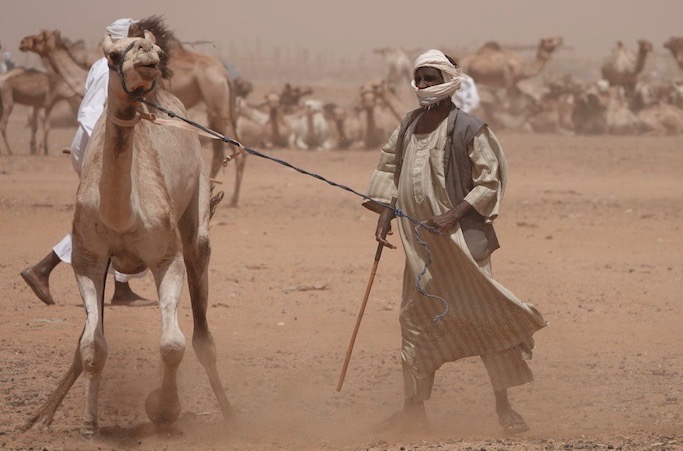
Trader at a camel market in the desert near Omdurman, Sudan
Travelling through Sudan in Ramadan in +47°C while the country was in revolution is an experience I recall about with mixed emotions. Mostly positive of course – this was my second trip to Sudan and as before, literally every single person I met could be counted among the kindest, friendliest, most helpful ever. Everywhere you go, people offer to show you the way, invite you to their home, introduce you to their friends and so on. Of the 80+ countries I have visited I have only every encountered this level of genuine hospitality in four others – Vanuatu, Federated States of Micronesia, Papua New Guinea and Tajikistan.
This time I had entered Sudan from Egypt, but on my previous visit I had entered from Ethiopia. You meet very few other travelers in Sudan, but the genuine consensus in the blogosphere is that while Ethiopia has loads of tourist sites, from the locals you get loads of hassle, while in Sudan there are very few tourist sites but half the pleasure of travelling there is all the incredible experiences you have with the locals. I could not agree more. I don’t want to diss the Ethiopians, but the vast majority of interactions you have there as a traveller involve people trying to get money out of you. I’m 100% sure that this is ONLY the people involved in the tourism industry and not the vast majority of Ethiopians, and is only to be expected in a country where tourism is managed in a way that thousands of rich white people flood in, obviously spending lots of money of which very little filters down to the locals.
But I digress. The weekly ferry down the River Nile from Aswan (Egypt) to Wadi Haifa (Sudan) is a great introduction to the country. Since many of the Sudanese you meet here are people with some experience of international travel, at least to Egypt, a larger proportion know English than in the rest of Sudan. Many approached me as the only non-local to strike up conversations. Over the 18-hour ferry journey I met nearly everyone on the boat, got invited for strong Sudanese coffee and had long political discussions with numerous people about the current revolution and the sit-in protest that had been going on for 1.5 months outside military headquarters. The previous dictator had recently been removed in a coup but the people, worried that a new military dictatorship would simply take over from the old one, were peacefully insisting on a civilian government. Everyone I met was full of optimism and hope for the future. There was a real sense of triumph just around the corner, that this time everything would be different.
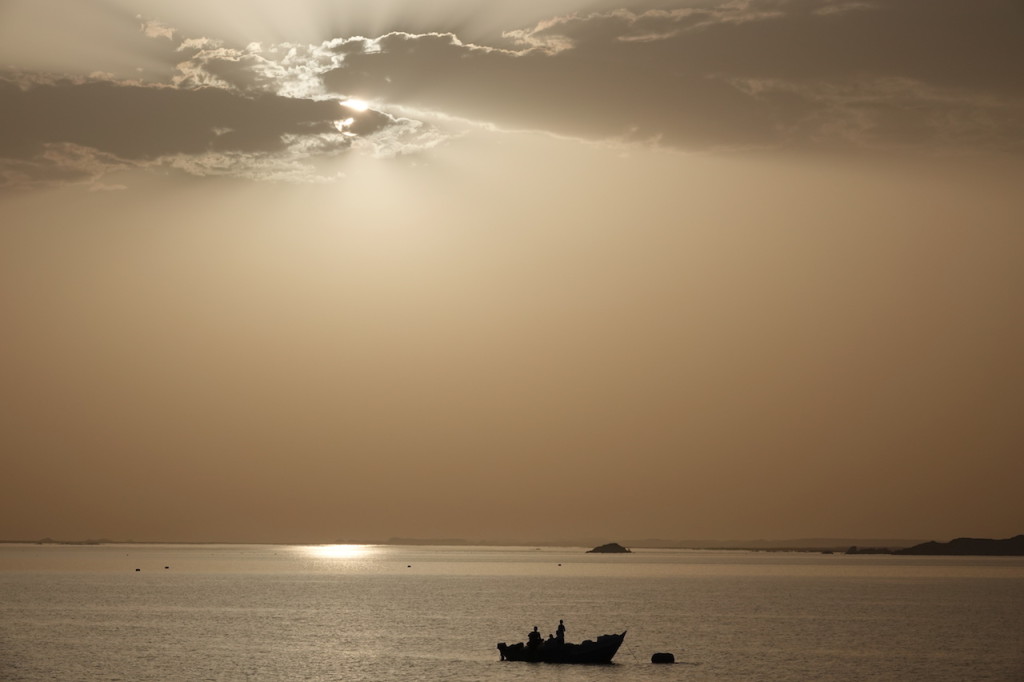
Boat on the Nile River, seen from the Aswan – Wadi Haifa ferry
“You’re not worried that they’ll disperse the sit-in with violence?” I asked one guy on the boat.
“They can’t,” he replied confidently. “This time the whole world is watching Sudan. They have no choice but to negotiate with us.”
Having naively not attempted to book a ticket in advance I had been too late to get a bed in a cabin and instead had to down in the hold on benches with all the other cheapskates. They seemed to have put the air conditioning on the “Arctic Siberia” setting, and while everyone else had known to bring blankets with them I had not. I fell asleep shivering and teeth chattering. Enjoy this part of the trip if you ever take this ferry – it will be your last chance to escape from the oppressive heat until you reach Khartoum.
The contrast between Aswan, with its Corniche, 14-storey hotels hotels, swimming pools and traffic, and Wadi Haifa could not be more stark. The Sudanese “town” is little more than a collection of single-story mud and concrete buildings, half consumed by the desert and with sand for streets. I took a motorcycle taxi to a nearby hotel where beds were just over $1. Other than the fact that one of the walls in my room was collapsing it looked like an OK place to stay.
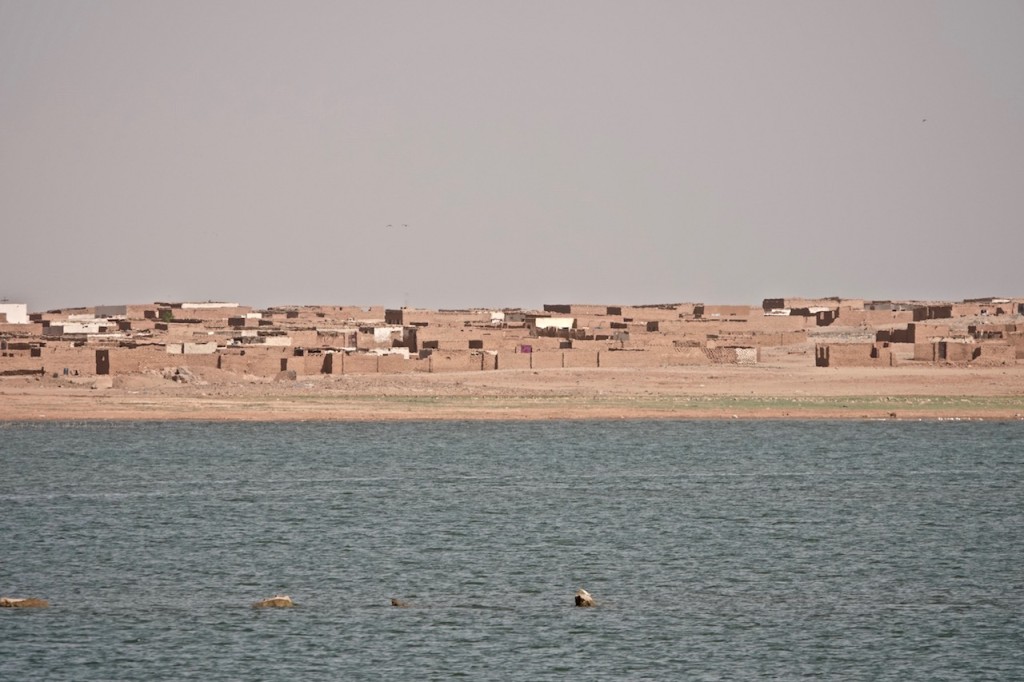
Wadi Haifa
The temperature was 47°C so I went to take a shower in a row of outdoor cubicles just a few feet from my room. While doing so a cockroach appeared out of a whole in the wall. Having travelled all over Indonesia by Pelni ferry I now have a raw and raging hatred for these creatures. I splashed water at it in the hope it would disappear back into the hole but instead it scurried down the wall and stopped in a corner on the floor. I continued with my shower, nonetheless keeping a watchful eye on the little critter.
When a second cockroach appeared from the same hole I was very close to the limit of what I was comfortable with and decided to finish my shower and get the hell out. I washed the soap off my body, glanced back at the hole and found that I was suddenly in that scene from Arachnophobia when the spiders start getting born with reproductive organs and begin multiplying exponentially. Dozens upon dozens of cockroaches were streaming out of the hole, attracted by god knows what, to cover the wall of the shower.
With a curse I grabbed my towel, grappled with the lock on the door and burst out into the sand and blazing sunlight, almost knocking over a man who had been washing his feet just outside. He froze, hands unmoving on soapy feet, staring horrified at me as I realized that in my hurry I had not completely covered my back side with the towel. Apologizing, I stumbled towards my door, fumbled with the padlock, gained access and shut it rapidly behind me in shame.
Wadi Haifa’s sandy streets were deserted during the day, its single-storey buildings providing no shade from the scorching overhead sun. Locals, forbidden from eating or drinking, could occasionally be glimpsed through open windows, lying around in the dark of their houses, trying to expend as few calories as possible and prevent themselves from sweating.
At around 18:30, however, the town came alive. Hundreds of people poured of their homes and every second building turned out to be a restaurant or hookah cafe. Both sides of every street were suddenly lined with chairs placed in the sand, every one of them occupied by someone eating, smoking shisha, drinking strong Sudanese coffee with ginger, talking, relaxing, enjoying the twilight after the trial of the day.
The next morning I spent hours waiting around for a minivan going south to Dongola, eventually arriving there in the afternoon. A motorcycle taxi driver took me to a huge modern hotel, spectacularly out of place and by far the best-looking hotel I saw anywhere in Sudan, including Khartoum. What it was doing here in Dongola I had no idea, but I welcomed the thought of a decent room after Wadi Haifa and the ferry so I went inside to investigate.
The lobby was empty, the restaurant was empty, the lifts were not working and the place seemed utterly deserted. Not only that, but everything had been left exactly as it has presumably been when the place had been working. I walked around, ascended to the forth floor, shouted, but could not find anyone. Bemused, I asked the driver to take me to another hotel.
Fifteen minutes later we had checked every hotel in town and all were full. I asked him to take me back to the big modern hotel, thinking that either I would find someone there this time or just sleep on a sofa somewhere. Right enough, this time I chanced to open an unlocked door to find four men inside, lounging around on mattresses on the floor and trying to keep cool.
“There are no rooms,” they told me, after I had shown them how to use Google Translate on my iPhone.
“But the hotel is empty,” I said, “Are you sure I cannot have a room?”
“We can give you a room, but they are in a bad condition,” he said.
The room was big, modern, with a nice bed, a cupboard, and by far the best room I would have anywhere in Sudan. It cost $5 and had a visible layer of dust over everything, as though it had not been cleaned in a long time, but beggars can’t be choosers. It did make me wonder what such a hotel was doing in this tiny remote desert town. It couldn’t possibly be economically viable for a private businessman to run so must have been built by the government for some reason. Given the recent overthrow of Sudan’s 30-year dictatorship and ongoing revolution against the military junta that had replaced it, one could see why a government-run hotel might be allowed to slip into disuse. Which raised the question: just how much of the government, public services and the country in general was actually functioning right now? Was there a police force? Were school teachers still getting paid? Could one get medical care?
The next morning was also spent waiting around for a minivan heading south to fill up with passengers. This seems to be an integral part of travel in Sudan. The drive was not as long as the previous day though, and I arrived in Karima by 12:30.
I found a motorcycle taxi and went out of town to Karima’s pyramids, standing in the desert several hundred meters from the roadside. They were not quite as impressive as the ones I had seen in January at Meroe, but were well worth a look (see the background of this web page for a general impression!).
From here I started trekking across the desert towards Jebel Barkal, a table-top hill perhaps 100 meters high and a kilometer or so from the pyramids. Upon arrival at the slope I had already drunk half of my two-liter bottle of water, sweated a prodigious amount and realized that I had left my hat in my rucksack at the bus station. I had to make a decision whether to go ahead with this climb, at 1pm with 46°C heat, scorching overhead sun, no shade, no hat and little water. I decided to go ahead with it. I cannot decided whether it was the right or wrong decision. I certainly suffered a bit from it, it was certainly a bit risky, but it was only a short climb and the suffering did not go on too long.
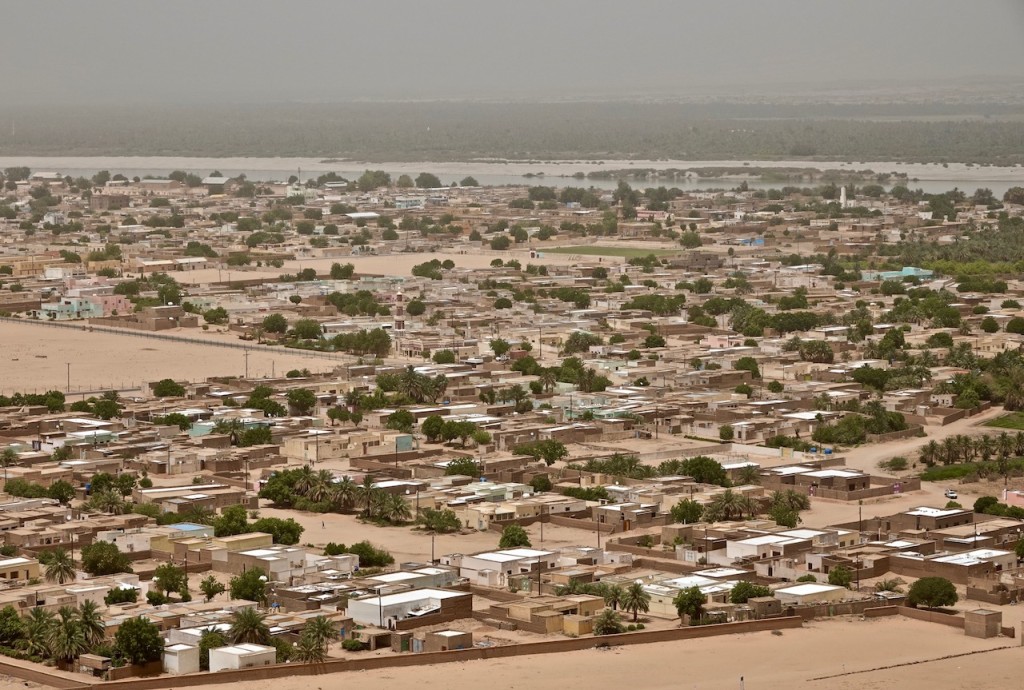
Karima, as seen from the top of Jebel Barkal
There was no path up the hill, just a very steep slope covered with rocks and sand to scramble up to the top. Once I was on the plateau at the top there was a spectacular view of the surrounding dunes, pyramids, Karima and the Nile. From up here it was immediately very clear why civilizations had grown up around the Nile and why it was to this day so important for the region: all you could see in every direction was endless orangey-yellow sand, but it was broken broken in one place by a narrow band of greenery that snaked through it along the banks of the river. In the vast desert, the Nile was the only thing that made life possible, as well as providing a means of transport from here north to the Mediterranean or south to Ethiopia and Uganda.
It took me a while to find the way back down, as from the edge of the plateau the slope looked almost like a sheer cliff. Once I was on the slope, however, I found that it was too steep to descend on foot but that when you tried to do it on your bum and hands the rocks and ground were too hot to touch. This led to a very rough descent with several near-burns until it leveled out and I was able to continue on foot, my water by now all long-gone and the sweat pouring off me in cascades.
The road looked tantalizingly close from the bottom but it took a long fifteen minutes to get there, and I believe this was the closest I have ever come to sunstroke or heat exhaustion. Once there I flagged down a passing vehicle that took me back into town. What to take away from this situation? Climb Jebel Barkal in the evening and enjoy the sunset, do not try it in the middle of the day with no hat and insufficient water!
I caught another minivan headed east to Atbara. By around 18:30 we were approaching town and I noticed that there were an unusual amount of people hanging around the roadside. A bit further on some of them had formed a roadblock, forcing our driver to stop. The driver wound down his window and proceeded to speak with the men from the roadblock for around five minutes, sounding as if he were explaining something in an apologetic tone. Eventually the road block guys smiled, let him go and waved him on.
“They want us to break our fast with them,” the driver told me. I had been convinced it was in some way connected to the revolution, but as we drove on more and more people continued to run up to our car, trying to wave us over to the side of the road where many of them had laid table cloths with bread, water and other food around which large groups were sitting and eating.
“They’re selling food like a cafe?” I asked the driver.
“No, this is just what everyone does from small villages along the road or nomad camps off in the desert. They come to the road and share all their food with each other and any passersby who want to join in.”
I spent the night in Atbara in a mosquito-filled room, sweating endlessly.
The next morning I found a driver willing to take me to the archaeological sites of Naqa and Musawwarat. While many of Sudan’s sites can be accessed by public transport, such as Karima and Meroe Pyramids, these two cannot as they are 30km or so off the main road in the middle of the desert.
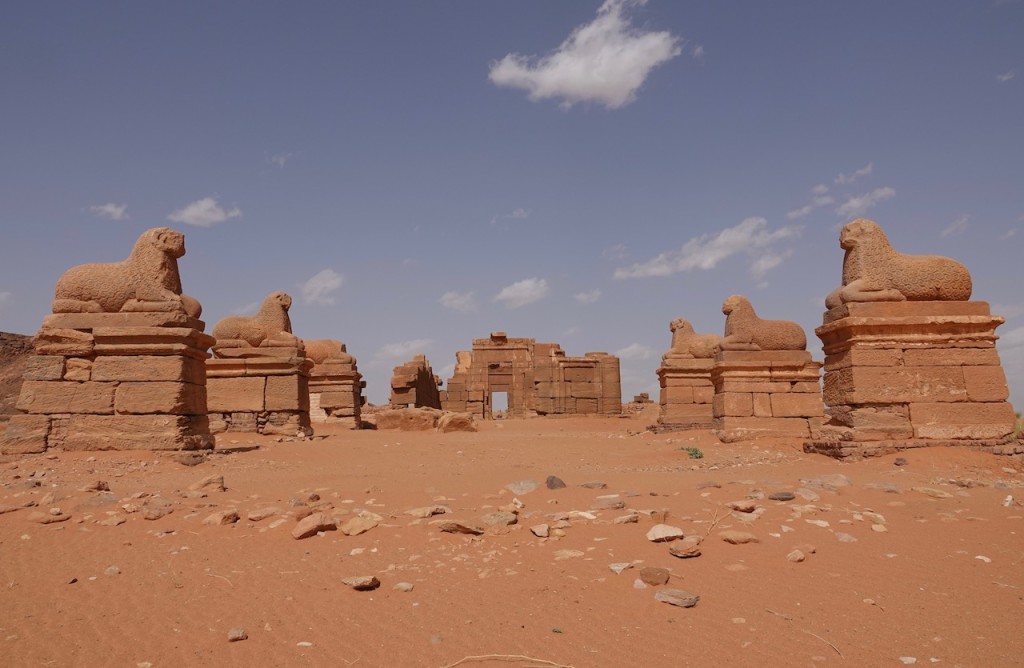
Naqa
Driving through the desert, we passed nomadic people once every ten minutes on average, traveling by donkey, camel or just watering their animals at a well. There was not a single permanent settlement. It definitely provided a very different impression of Sudan from what I had seen so far. Just following the main road through the country from tourist site to tourist site, one might be tempted to think Sudan was just a string of villages and towns clinging to the road. As soon as you leave it, however, you see that things are very different just a few kilometers away, with very few buildings but plenty of life and human activity in all directions. It certainly made me wonder, if one turned off perpendicular to the main highway and just drove, how far through this roadless nomad country would one travel before reaching the next signs of settlement or construction of any sort? Judging by the maps, quite a long way.
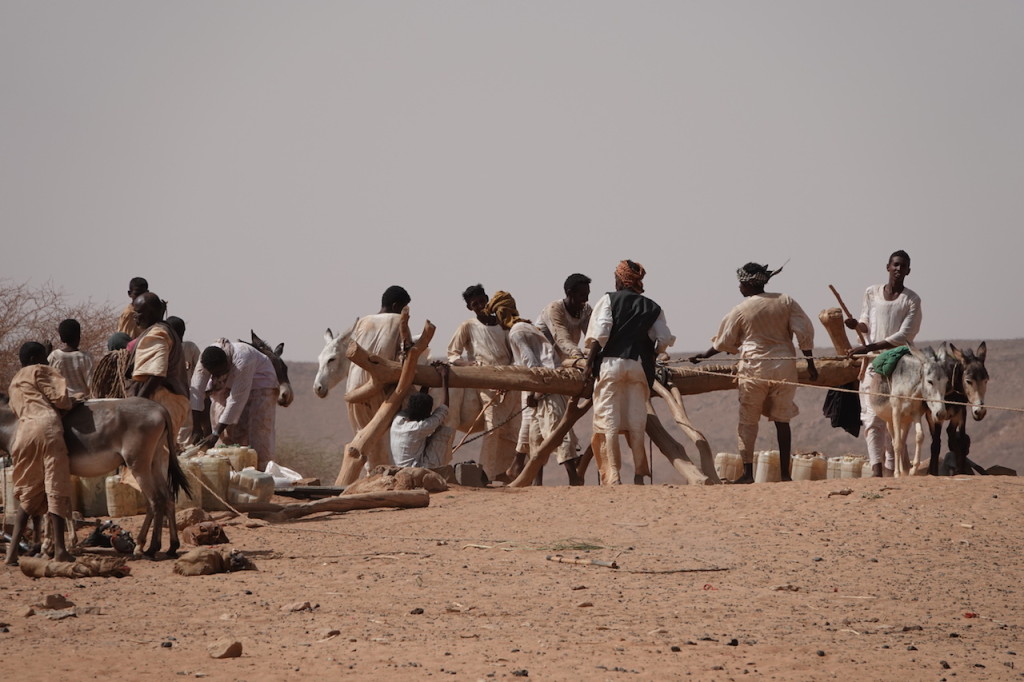
Nomads at a well near Naqa
Naqa with its lion statues and Musawwarat with its forest of crumbling pillars were delightful, but the real highlight for me was getting a brief glimpse of Sudan away from the road. An even greater highlight of the day was arriving in Khartoum in the evening, having dodged the crowds off roadside fast-breakers on the outskirts and finally having a room with air-conditioning to sleep in! The cold was just heavenly as I dozed off to sleep, promising myself that I would never subject myself to such tortuous levels of heat ever again.
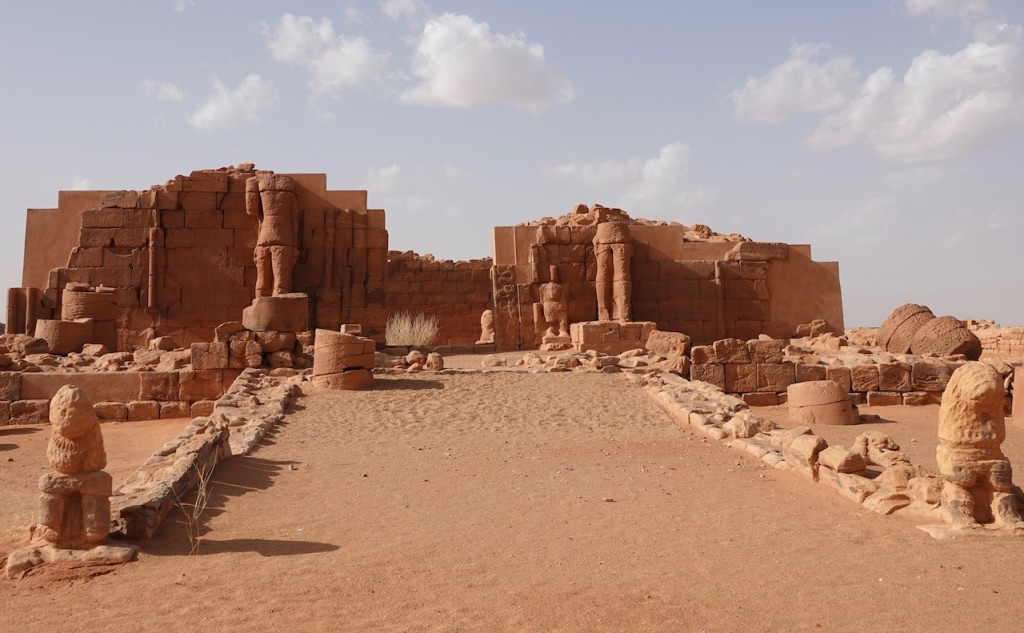
Musawwarat
The next day, being Saturday, there was supposed to be a camel market taking place in the desert outside the nearby town of Omdurman. I crossed Khartoum, noticing several pickup trucks parked on a bridge and loaded with mounted guns far longer than an adult person. Although the revolution was currently focused around a peaceful sit-in demonstration, the opportunity for violence was right there, ready and waiting.
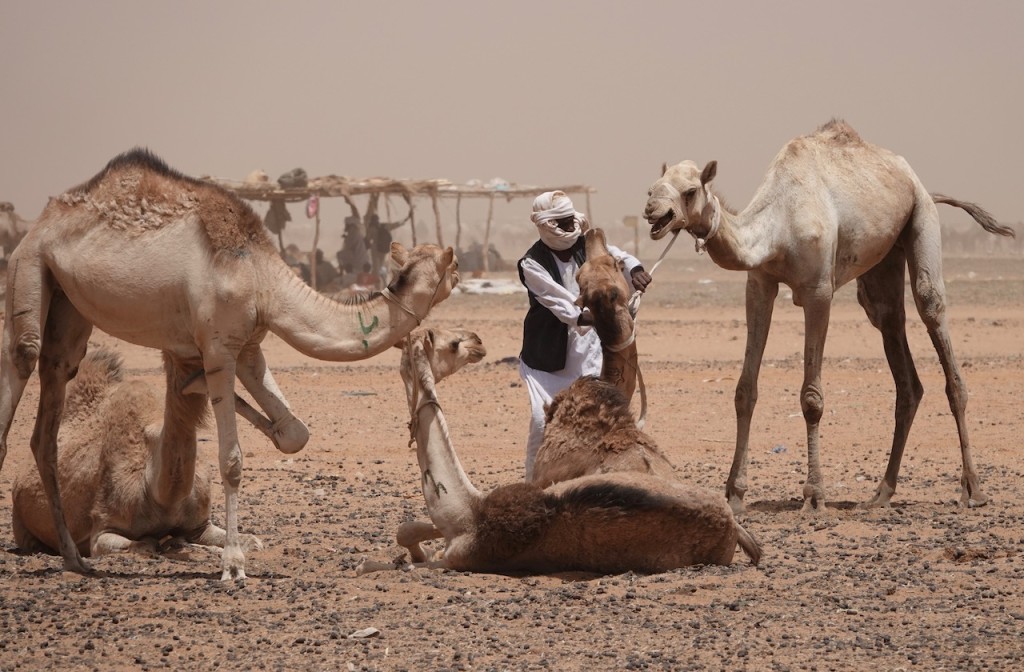
Camel market in the desert outside Omdurman
I have seen camel markets before, having spent a lot of time in Oman in the 1990s as a child. They were absolutely nothing, however, compared to this one. There were literally thousands of camels, divided into several different herds, occupying a vast area of desert outside the town. Occasionally a herder would drive his animals to a well to water them, a new herd would arrive over the horizon in cloud of dust and sand, and potential buyers wound their way amongst the produce, inspecting one camel after another and creating a constant sense of movement on the desert plane. A helpful passerby explained to me that one area was for meat camels, another was for transport camels and a third was for racing camels, but of course to an outside eye it was hard to tell the difference between the types.
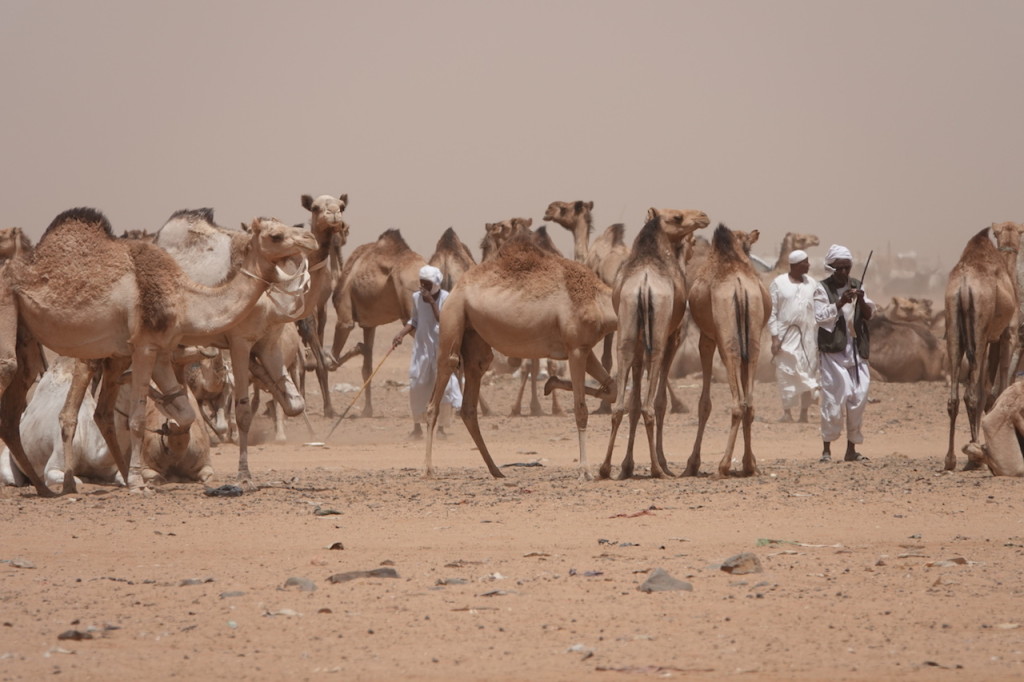
Camel market in the desert outside Omdurman
I flew out of Sudan the next day, glad to be escaping the heat but still just as much in love with the country as I had been after my first visit, determined to come back to visit the west if the situation there ever improved. I also allowed myself to share in the quiet optimism of the Sudanese for the future of their country, perhaps naively hoping they might lead the way for other African nations with a shining example of how to build a democracy from a broken dictatorship.
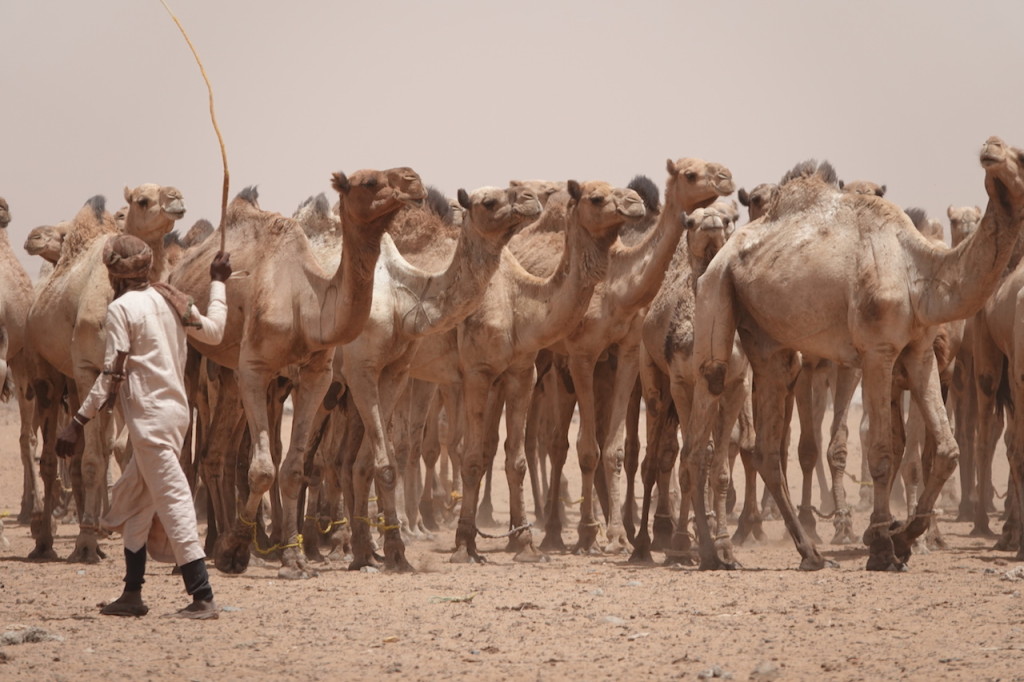
Camel market in the desert outside Omdurman
Practical information:
1. Visa. Easy to get. You just need to provide flights and a hotel booking to your nearest Sudanese Embassy. Alternatively certain Khartoum hotels, such as the Accropole, can arrange for you to receive a visa on Arrival at Khartoum Airport if you book their hotel.
2. Money. You can easily get by on $10 – $12 a day if willing to sleep in cheap hotels. This will cover your accommodation, food and water and transport.
3. Safety. After months of peaceful protests there was a sickening massacre of hundreds of people on June 3rd 2019, a few days after I left. Since then, however, everything has been calm and the military junta and the civilian opposition seem to have finally reached an agreement about how Sudan should be governed in the future.
4. TransportThere is transport at least daily between all the main villages on the main highway that dissects Sudan from north to south. Sudan is one of those countries where you can just ask around and everyone will be willing to help you find transport or at least show you to the bus station.
5. Accommodation.As hinted at in this book, accommodation standards are extremely low, especially in smaller towns. They are also very cheap. For $1 to $1.50 you can get a bed in a dorm like the one I described in Wadi Haifa. For $5 – $7 you can get a single or twin room in an actual hotel where everything is a bit dirty and rough-looking but which is basically completely comfortable. Only in Khartoum can you find anything of a slightly higher standard.
6. Ferry between Egypt and Sudan. This departs Aswan on Sunday and Wadi Haifa on Tuesday. Book in advance if possible as otherwise, like me, you may end up having to sleep in the hold on a bench with a hundred or so other passengers. See my Egypt blog for more information.
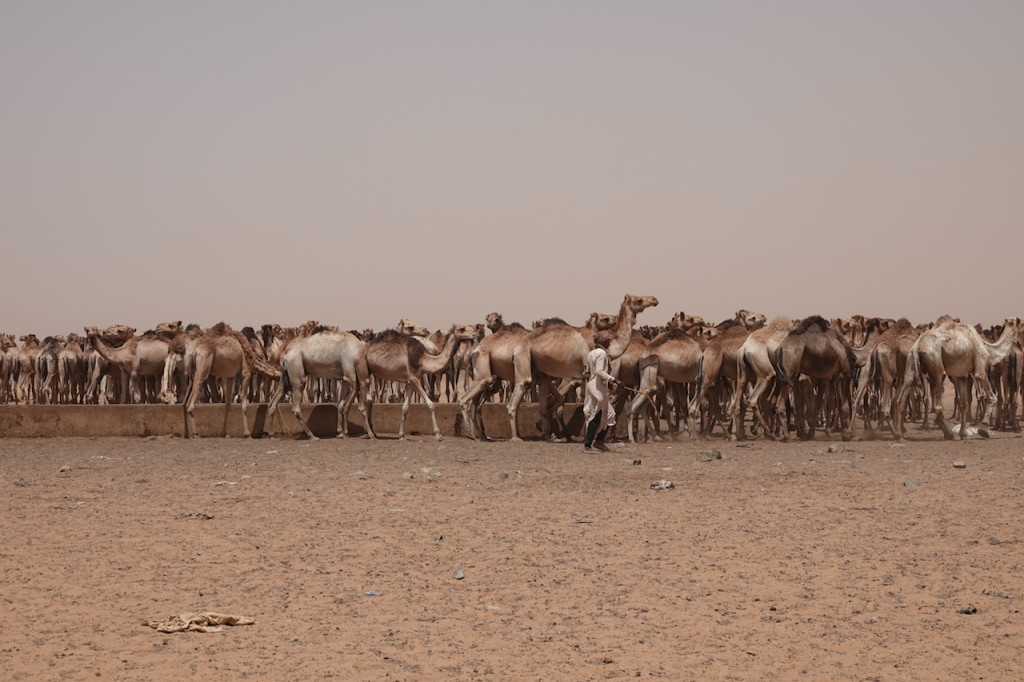
Camel market in the desert outside Omdurman
Posted in Blog